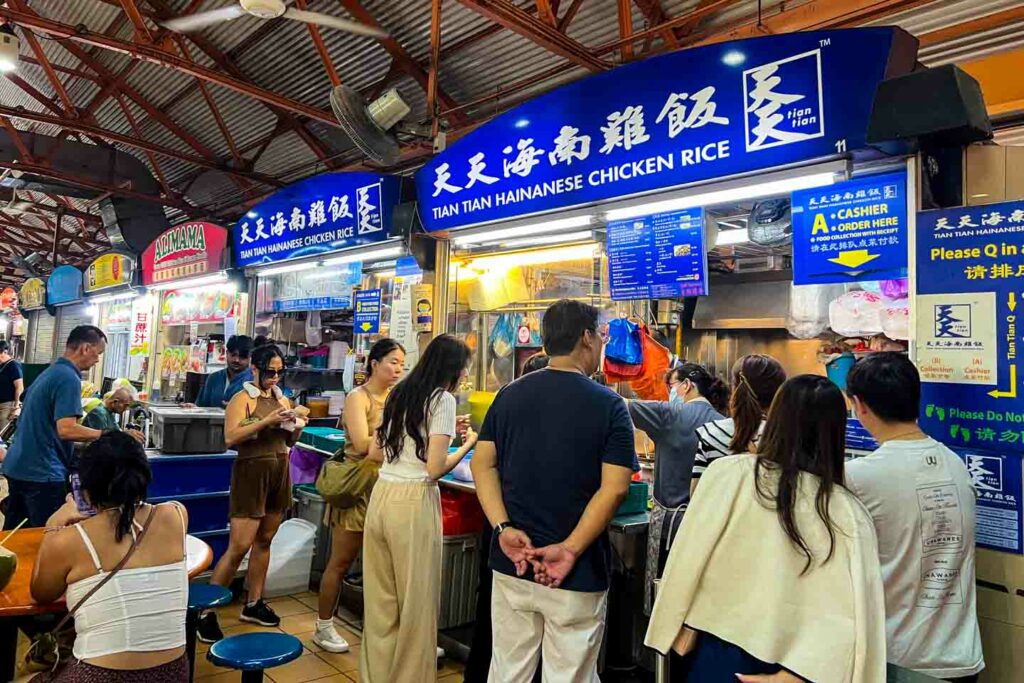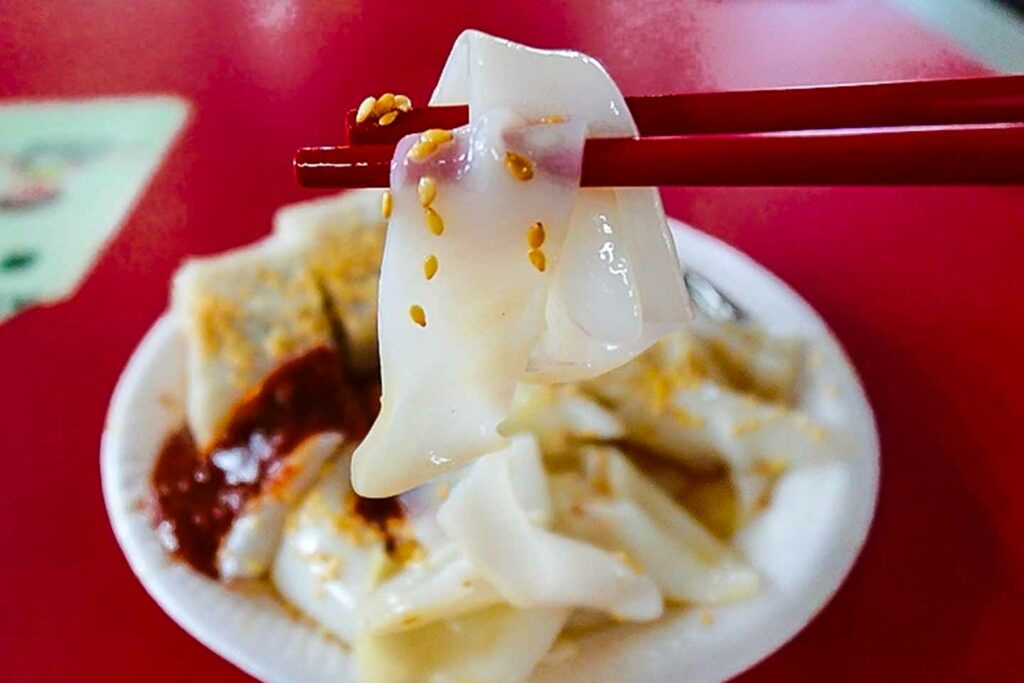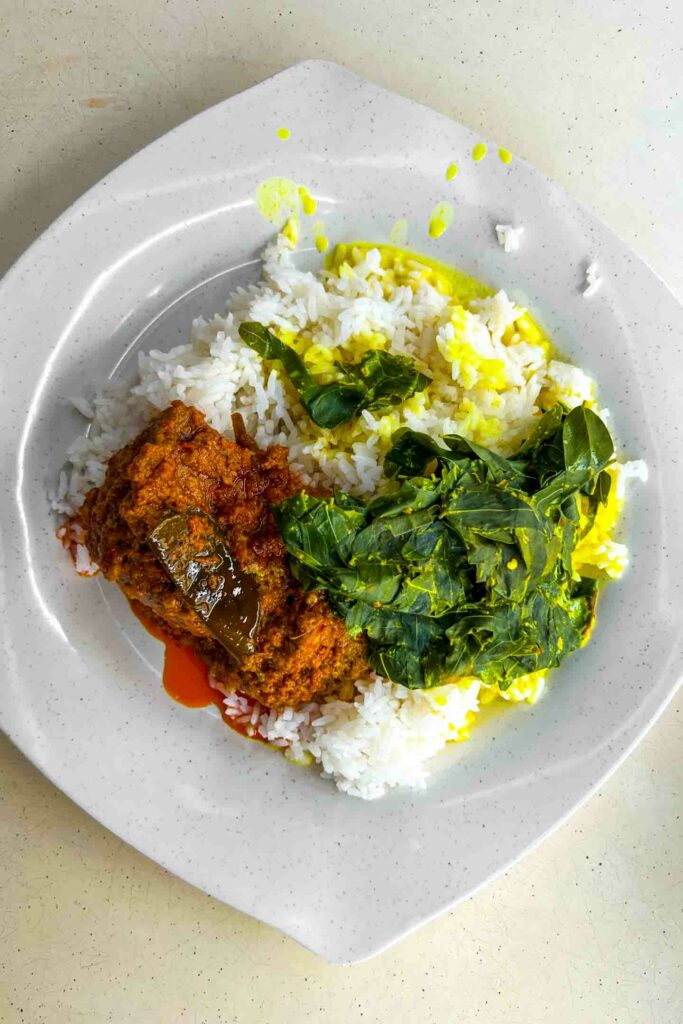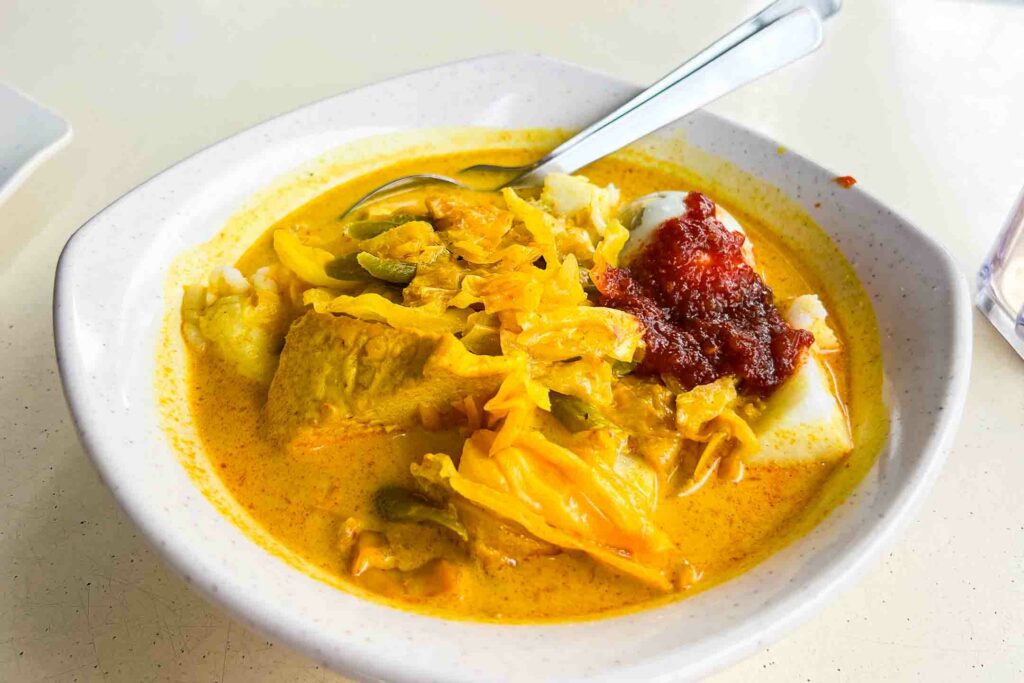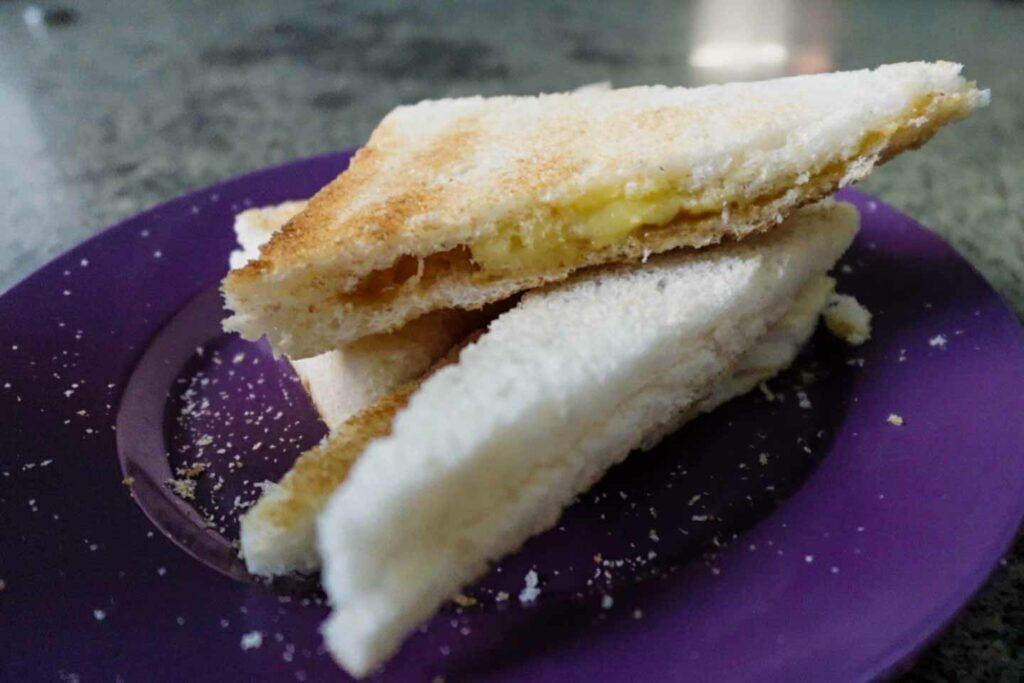A true melting pot of cultures, traditional Singapore breakfasts offer something for everyone..
Food is more than just a meal in Singapore—it’s a shared experience that brings people together, no matter their background.
As it’s one of the most expensive cities in Asia I was worried it would be too expensive to visit.
I learned accommodation can be pricey but food is amazingly affordable for the quality. So I stayed in a budget hotel in Singapore so I could stay longer and well…eat more.
And 8 days eating was worth it. Singapore’s history and diversity is on every plate.
Singapore’s food culture is a mix of Chinese, Malay, Indian and European influences.
This tiny island nation was a British colony for over 140 years, but long before that, it was a major trading hub.
Immigrants from China, India, and the Malay Archipelago arrived and settled in different areas. When Sir Stamford Raffles and the British created the country we know as Singapore they established enclaves.
These enclaves were rules of segregation that separated the cultures as residents could only live in their ethnic enclave.
Much has changed since then but you now know them we Little India, Chinatown and Kampong Glam and Geylang Serai.
This is why you see so much traditional food from other countries with a Singapore twist. And it’s why Singapore’s cuisine is like none other in Asia.
Where to Eat Breakfast in Singapore
Singapore’s breakfast culture is a perfect reflection of its multicultural history.
Whether you’re enjoying a Chinese rice noodle dish, an Indian flatbread or a Malay coconut rice meal, you’re tasting the flavors of generations of migration and adaptation.
From hawker stalls to kopitiams (traditional coffee shops), breakfast here is affordable, quick and full of history.
Personally, I always choose local restaurants and hawker stalls over trendy spots on Instagram. If an eatery has been around for generations there’s a reason why.
Singapore Breakfasts
1. Chee Cheong Fun
Chee cheong fun is a simple yet satisfying breakfast that originated in southern China.
The name translates to “pig intestine noodles” because of their rolled-up shape, but don’t worry—there’s no pork involved.
These silky rice noodle rolls are steamed and served with a combination of sauces. A sweet sauce made with hoisin, soy and sugar complements the smooth texture of the noodles, while a chili sauce adds a kick.
Chinese Food in Singapore
I ordered mine at the Chinatown Food Centre and a friendly woman who just ordered suggested that I I try both sauces. I am thankful for that as I may have shied away from the chili sauce but mine was only medium spicy.
Some versions include fillings like shrimp, mushrooms, or barbecued pork, but the traditional Singaporean breakfast version is plain and affordable.
This dish is commonly found in hawker centers where locals grab a quick and cheap meal before starting their day.
Chee cheong fun pairs well with yam cake, another common breakfast dish made from mashed yam, rice flour, and dried shrimp, then steamed and cut into squares.
It has a dense but tender texture, making it a hearty side dish.
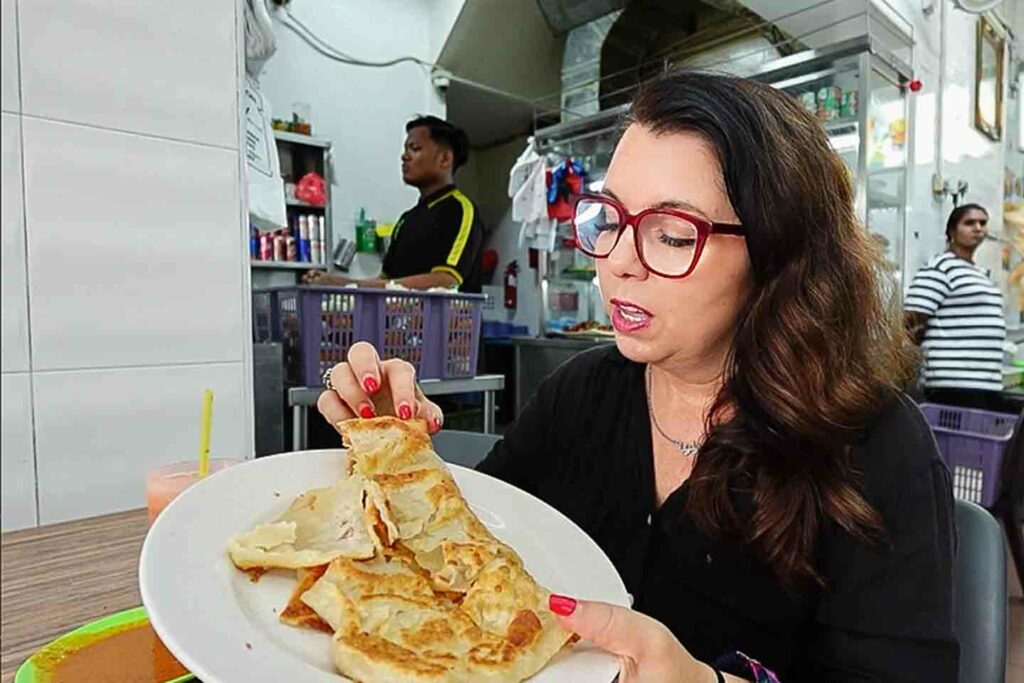
2. Roti Prata
Brought to Singapore by South Indian Muslim immigrants, roti prata is a crispy, flaky flatbread that’s fried on a griddle.
It’s similar to paratha in India but adapted to local tastes. You may know it as roti canai in Indonesia, and it’s a very common Malaysian breakfast.
In Singapore, prata is often eaten with curry—usually a mild, coconut-based korma or a spicy, tomato-based dhal. Some people like it with sugar, turning it into a sweet breakfast instead of a savory one.
Victory Restaurant, right across from the Sultan’s Mosque in Kampong Glam is a great spot for prata. It’s famous for its biryani and murtabak (stuffed prata). But its plain roti prata with curry is a must-try breakfast.
It’s like toast but so much better.
if you’re really hungry murtabak is perfect. Often eaten at breakfast, it is a stuffed version of prata filled with spiced minced meat, egg, and onions.
It’s more filling than plain prata, making it a great choice for those with a big appetite in the morning.
This Singaporean breakfast has Arab origins and you’ll find it all over Asia from Indonesia to India and I love seeing how it changes in every country.
Victory Restaurant
701 N Bridge Rd, #701, Singapore 198677
3. Nasi Lemak
Nasi lemak is more of a style of eating than a single dish. It starts with fragrant rice cooked in coconut milk and pandan leaves, giving it a rich aroma.
From there, diners choose their toppings. Many people add fried chicken, omelets, or even rendang (slow-cooked beef in coconut sauce). Traditional options include fried anchovies, peanuts, cucumber, and sambal (a spicy chili paste).
Originally a Malay dish, nasi lemak has spread throughout Singapore, Malaysia and Indonesia, with each country putting its own twist on it.
Some versions of nasi lemak include a variety of seafood like sambal prawns or grilled fish, making it a more luxurious meal. The versatility of this dish is what keeps it so popular.
4. Lontong
Lontong is another breakfast influenced by Malay and Indonesian cuisine. It’s originally an Indonesian breakfast, but it’s now common in Malaysia, Singapore and Brunei with each country making it a bit different.
However, the base stays the same, a hearty portion of compressed rice cakes cut into cubes.
The Singapore breakfast version is usually served in a mild coconut curry broth. The dish often includes tofu, boiled eggs, cabbage, and sometimes a bit of sambal for sweetness and heat.
It’s a hearty breakfast and one of the best ways to start your day in Singapore.
In some variations, lontong is served with fried tempeh, a fermented soybean cake that adds an earthy crunch.
The combination of textures makes this dish a favorite for those who enjoy a mix of creamy and crispy elements in their meals.
5. Kaya Toast
Kaya toast is Singapore’s answer to the British toast-and-jam breakfast, but with a local twist.
Kaya is a sweet coconut jam made with eggs, sugar, and pandan leaves, giving it a light green color and a rich flavor. The toast is typically grilled, slathered with kaya, and topped with a thick slab of cold butter.
It sound so simple but the cold butter on the hot toast gives a silky sensation on the crunchy toast that is unlike anything I’ve had.
Kaya toast is usually served with soft-boiled eggs, which you can top with a number of things. I chose soy sauce, sweet soy sauce (known as kecap manis in Indonesia) and white pepper. Many Singaporeans dip their toast into the eggs for an extra layer of flavor.
Kaya toast is a staple at kopitiams across the city. Some places offer thick, pillowy bread, while others stick to thin, crispy slices. A few even bake their own buns fresh every morning.
If you want a more indulgent version, some cafes serve kaya toast as a French toast-style dish, with additional toppings like honey or fruit.
Try the Original at Ah Seng (Hai Nam) Coffee in Amoy Street Food Centre.
